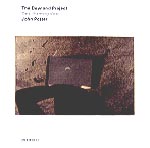Modern performers often are faced with a kind of dilemma: if they choose to interpret works from previous centuries, how much do they allow their ingrained awareness of all the intervening music and attendant stylistic developments to affect their performance? Should they even try? Do they have any choice? Ears that have heard and minds that in some way have processed Beethoven, Wagner, and Schoenberg, not to mention modern pop and jazz, do not approach a performance of 17th-century music the same as a person for whom contemporary music was Monteverdi. Perhaps we are too self-consciously aware of and concerned with “authenticity” and thus rob these early pieces of their spontaneity; perhaps modern scholarship creates an isolating, elitist community of performers who guard to a fault the gates of “correctness”. Is it possible that we actually can respect the older music’s integrity by allowing it to breathe in a modern context, by not trying to preserve the cast of its ancient-ness but rather honoring its very survival with something of today’s esthetic understanding? Although those questions must be answered by individual listeners (if not by music theorists and philosophers!), their premises at least partly reflect the attempt of the performers here to “look again at ideas of historical appropriateness and use them as a point of departure for new interpretations. . .”
Of course, as with other similar projects by producer Manfred Eicher, tenor John Potter, and various other musicians–Officium, Mnemosyne, and this disc’s immediate conceptual predecessor, In Darkness Let Me Dwell–it’s impossible to fit this music into any convenient category. And that’s just the point: these realizations/improvisations/re-imaginings are intended to be contemporary interpretations of ancient original works, derived from the natural progression of musical ideas and customs that evolved in the centuries since Benedetto Ferrari, Robert Johnson, John Wilbye, Henry Purcell, Cipriano da Rore, and the above-mentioned Monteverdi created the works that form the basis of this program. So we have the occasional addition of John Surman’s soprano saxophone or bass clarinet, or of Barry Guy’s decidedly mod but always tasteful double-bass. We also hear the equally improvisatory but perfectly integrated–and yes, historically informed–baroque violin-playing of Maya Homburger and the chitarrone and baroque guitar of Stephen Stubbs.
There are more or less straightforward songs gorgeously sung by Potter (Ferrari’s “Già più volte tremante”, for instance) and there are instrumental pieces–several written by Stubbs. Taking a cue from manuscripts and from recent scholarship, Potter & Co. perform some works originally for several voices as solo songs with improvised instrumental parts. The repertoire selection also demonstrates stylistic changes that appeared in the 17th century relative to lute and vocal writing. This is a fascinating program that’s not always thoroughly engaging–a couple of the songs go on a little long and lose us momentarily in all the dramatic ornamentation–but it’s never less than sincere in its purpose, and never violates the essence and purity of the original works. The sound is demonstration-quality.
































